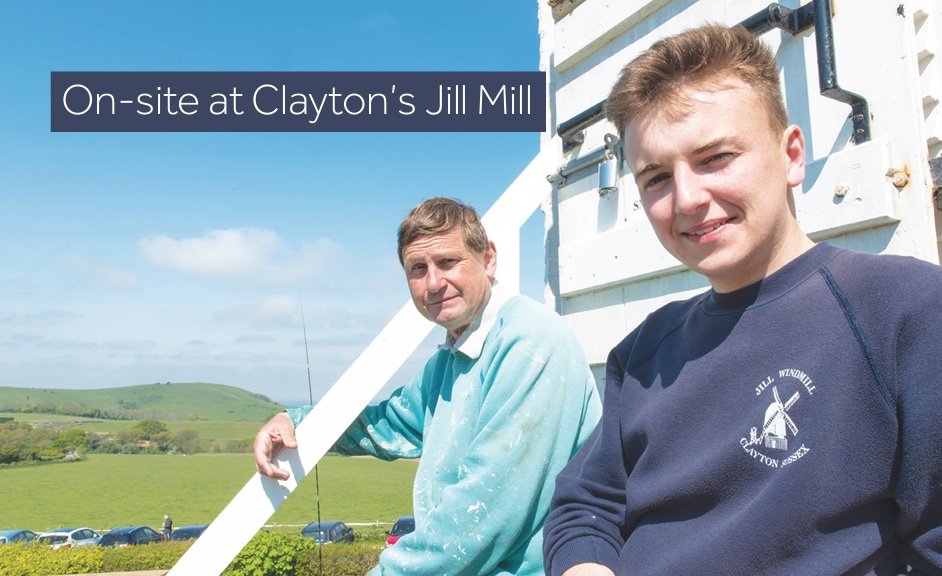By Deirdre Huston
The earliest reference to a windmill on Clayton Hill was Duncton Mill in 1765. After forty and eighty five years respectively as working mills, both Jack and Jill mills fell into disuse. Simon Potter is a longstanding Trustee of The Jack and Jill Windmills society who has been involved since 1978. He first visited the mill as a boy when his mother worked as secretary to Henry Longhurst who owned the house at Jack mill. Restoration work commenced in 1979. A strong team of volunteers formed during the 1980s and, in 1986, Jill’s millstones produced flour for the first time in eighty years! Over the years, Simon has seen what a valuable role volunteers play in maintaining the mill and making her accessible to a wide cross-section of visitors, and he says: “We do tours, showing people around, do maintenance to keep her running and some of us are also actively involved in milling.”
Many volunteers find the site is a lovely, restorative place to wile away a day, an oasis of calm away from busy day-to-day life. A bank of cowslips, ox-slips, wild orchids and daffodils add colour and help attract wildlife. Nicola recalls how one day they watched a stoat. Some local volunteers help maintain the grounds and grassy area. Nineteen-year-old trainee millwright, Adam Winsor is another regular volunteer at Jill mill, and says: “I love coming to help at Jill mill, up on the downs.” He also enjoys helping with milling flour at Oldland Mill, and has been awarded a grant through the Heritage Crafts’ Endangered Crafts Fund, which hopes to increase the likelihood of endangered crafts surviving into the next generation. “Being a millwright is an endangered craft,’ he says, and adds: ‘It would be great if younger people get involved as this craft is worth saving.” During National Mill Weekend, several volunteers are busy scraping paint from the lower body because on the south side, where the sun is most intense, because the heat causes paint to peel away leaving timbers exposed. Simon explains: “Over the years, we’ve tried various options, but none has worked, now Ace Coatings South, on Ditchling Industrial Estate, have recommended specialist ‘Zinsser’ paint but the only drawback is that we have to scrape away all loose paintwork.
Over the summer, Jill mill will be open most Sundays from 2pm to 5pm, but they urgently need volunteers as there are many gaps in the schedule, meaning they may not offer refreshments on some dates which affects fundraising. Simon says: “We need people to help with the teas and coffees; some volunteers also like to make cakes with flour milled at the mill.” They also need volunteers to help show people around and get involved with maintenance. There are lots of different ways to get involved and Simon is keen to welcome in new volunteers, and create a new team to shepherd Jill mill on to future glories. He says: “Anyone interested should pop up on an open day on a Sunday or contact us through the website.” The windmill makes a wonderful landmark. If you are interested in finding out more, please see: www.jillwindmill.org.uk
To read the full article all about Jill Windmill, pick up June’s copy of Hassocks Life today.

